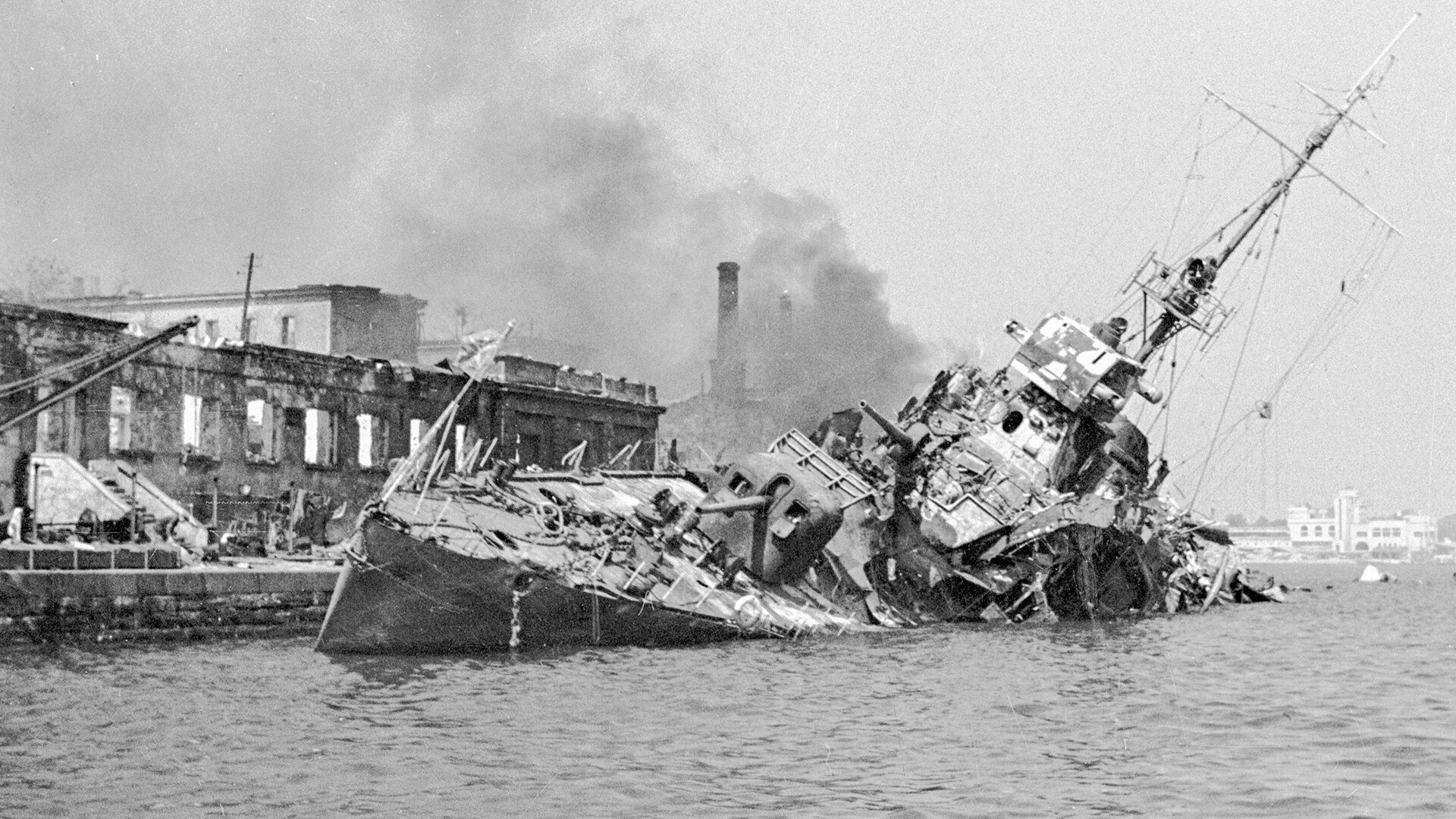
The destroyer of the 'Svobodny' project, sunk on June 10, 1942 in Sevastopol Bay by a massive air raid by German dive bombers.
Nikolay Asnin/Sputnik“Red Army soldiers, brave and courageous sailors of the Black Sea Fleet – not one step back! Just as you beat the enemy near Odessa, just as they are beating them near Leningrad and Moscow, beat the vile fascist scum, smash the brutal Hitlerite hordes. Fulfill your sacred duty to the Motherland,” was the appeal of the Sevastopol City Defense Committee on October 30, 1941.
On this day, German troops reached the distant approaches to Sevastopol, the main base of the Black Sea Fleet. A long and difficult defense of the city began, which lasted eight months.
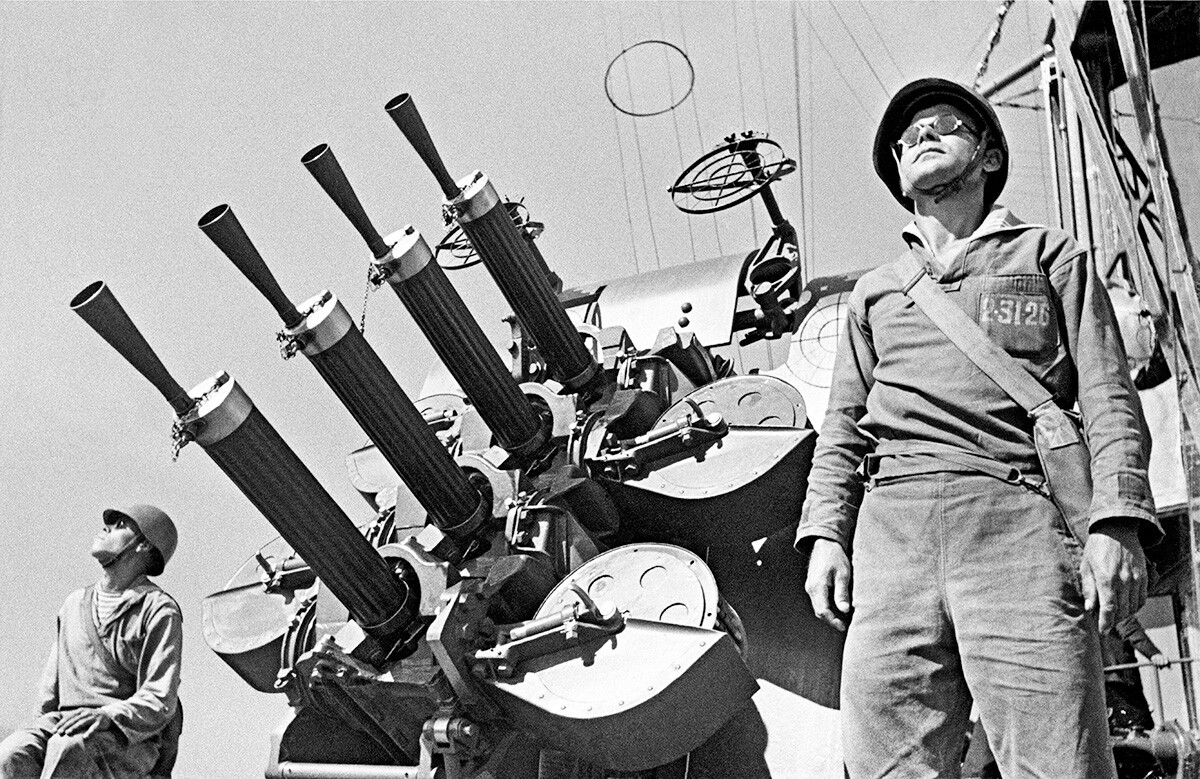
The ship's crew of the cruiser "Krasny Kavkaz" prepares to repel an air attack.
Evgeny Khaldey/SputnikBy the beginning of the war, Sevastopol was well prepared to repel an attack from the air and sea, but had no land fortifications. Their construction began in July, but, by October, they had not yet been completed.
Sevastopol was defended by sailors of the Black Sea Fleet, who were joined by the Primorskaya (Coastal) Army. Before that, it took part in the defense of Odessa.
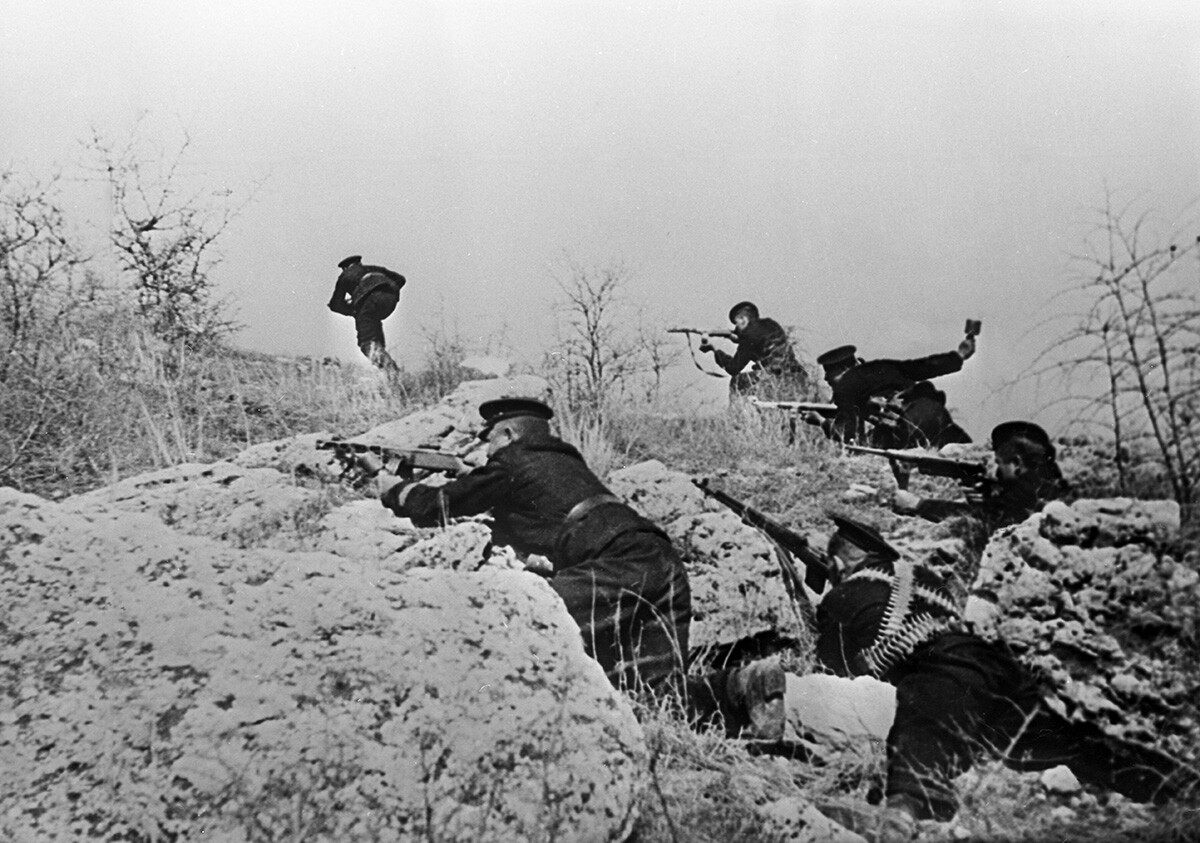
Soviet Marines attack Nazi positions near Sevastopol.
Evgeny Khaldey/SputnikThe 11th Army of General Erich von Manstein, rapidly advancing along the Crimean Peninsula, together with its Romanian allies, intended to take the city on the move. On November 11, the first assault on Sevastopol, completely cut off by land from the rest of the country, began.
The enemy penetrated the Soviet defenses in several areas, but significant losses forced them to stop the offensive until December. The city's defenders used this time to strengthen their defensive lines and replenish the Primorskaya Army.

German troops near Sevastopol.
Heinrich Hoffmann/Mondadori/Getty ImagesWork was constantly underway in the rear: they established the production of mortars, equipped two armored trains, built and equipped the ‘Touch me not’ floating anti-aircraft battery, which protected the city from enemy air raids coming from the sea.
The Black Sea Fleet and aviation continuously maintained communication between Sevastopol and the "mainland". Food, ammunition and reinforcements were delivered to the city, the wounded were taken care of and civilians were evacuated.
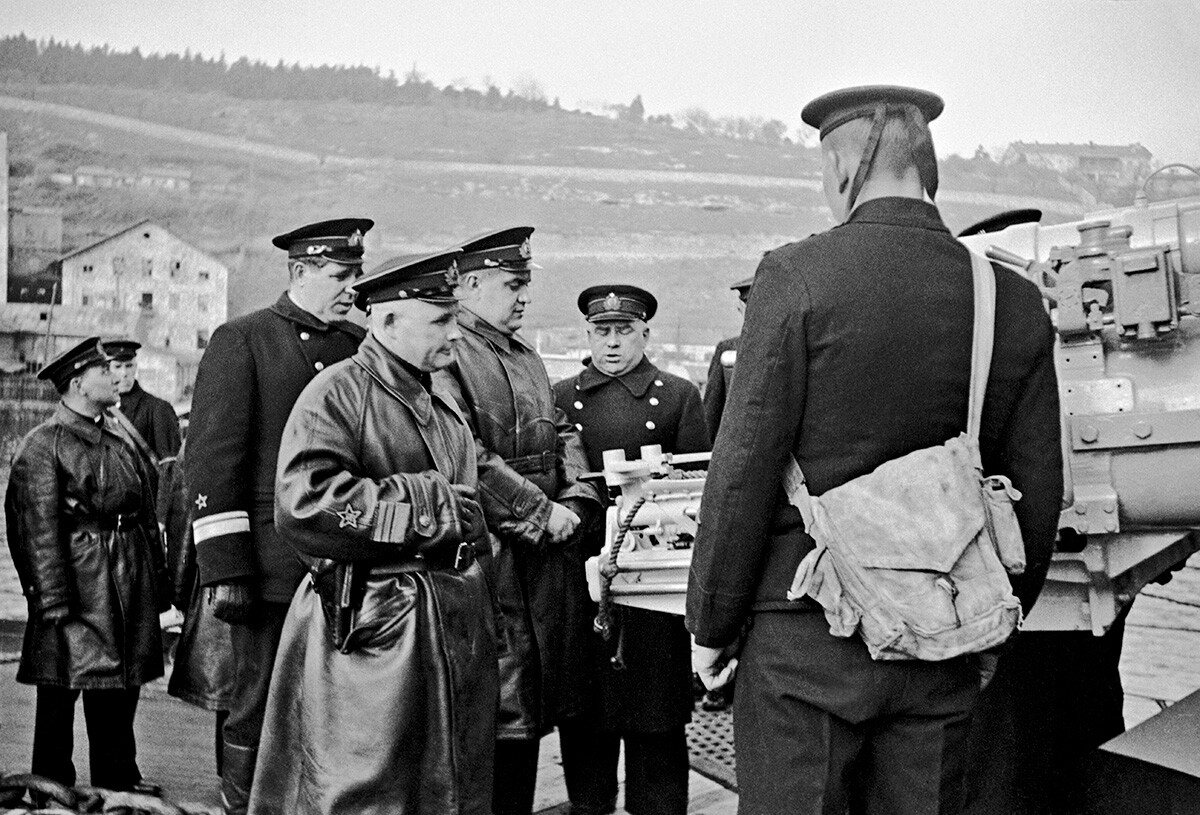
Black Sea Fleet Commander Vice-Admiral Filipp Oktyabrsky and Military Council member Divisional Commissar Nikolai Kulakov (center) talk with Black Sea Fleet sailors.
Vladislav Mikosha/SputnikThe second assault began on December 17. This time, the enemy was much better prepared and almost broke through to the strategically important Northern Bay, but was thrown back as a result of a counterattack.
The situation was saved by the Kerch-Feodosia landing operation that began on December 26, as a result of which Soviet troops liberated the eastern part of Crimea. The danger was already looming over the 11th Army itself, which had to remove units from near Sevastopol and transfer them to a new front.
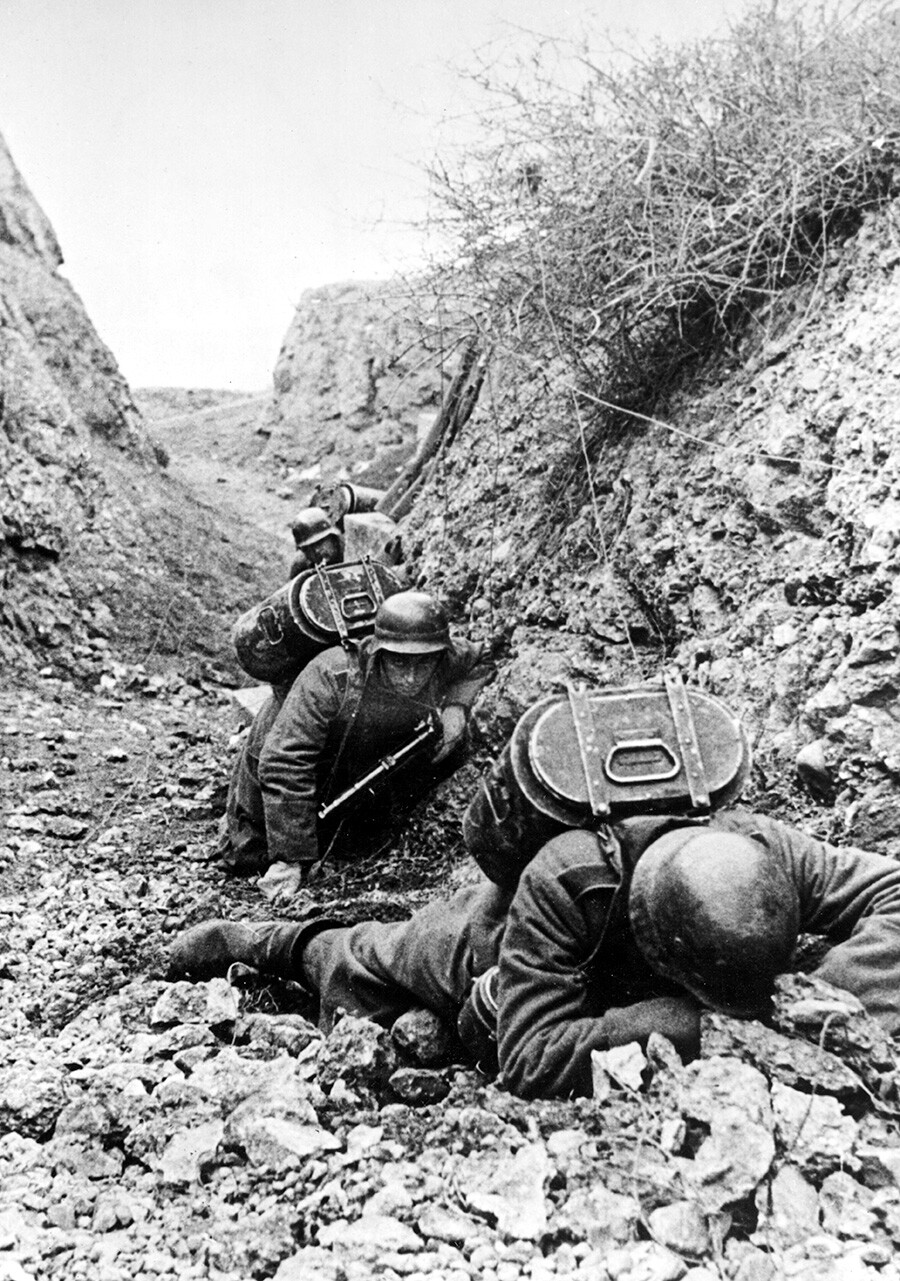
German infantry near the city.
Heinrich Hoffmann/Mondadori/Getty ImagesDespite the fact that the city's defenders were outnumbered by the German-Romanian troops by half, at the beginning of 1942, they threw the enemy back in several areas. However, in the spring, the situation became more complicated again.
The Soviet air group had been greatly reduced and could no longer effectively cover the convoys from Luftwaffe attacks. In addition, the activity of German torpedo boats had also increased. Now, only well-armed warships, not transport ships, could break through to Sevastopol.
In May 1942, during ‘Operation Bustard Hunt’, the Germans routed Soviet units in eastern Crimea. “The loss of the Kerch Peninsula put our troops defending the Sevastopol defensive region in an extremely difficult situation. All the forces of the 11th German Army were now turned against them,” wrote Marshal Alexander Vasilevsky.

General Erich von Manstein, Commander of the 11th German army, observing the situation on the outskirts of Sevastopol.
Heinrich Hoffmann/Mondadori/Getty ImagesBy the beginning of Summer 1942, the Germans had amassed a huge number of artillery pieces near the city, including the super-heavy 420-mm ‘Gamma’, 600-mm ‘Odin’ and ‘Thor’, and the 800-mm monster ‘Dora’.
“Starting from June 1, the Germans bombed without interruption and shelled us with heavy guns around the clock and, somewhere around June 5, we practically couldn’t see our ‘Stalin’s Falcons’ in the air. The sky was black from German planes,” recalled sailor Grigory Zamikhovskiy.
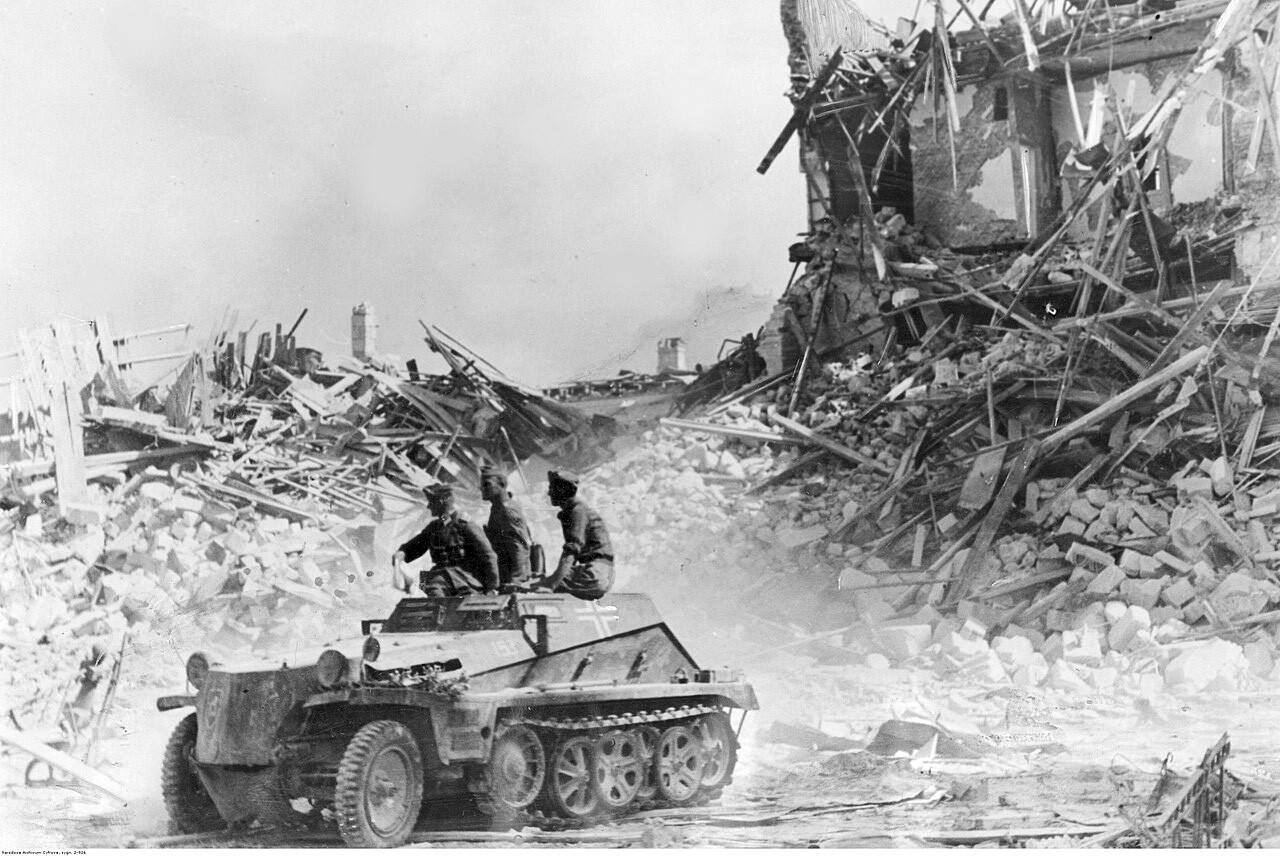
German troops in Sevastopol.
National Digital ArchivesOn June 7, the third, and final, assault on Sevastopol began. Fierce battles took place in all key areas of the Soviet defense: at Sapun Mountain, on Malakhov Kurgan, at Armored Battery No. 30 and at the foot of the Mackenzie Heights.
On June 26, the last reinforcements arrived in Sevastopol by ship – the 142nd Rifle Brigade. From then on, only planes and submarines were able to break through to the city.
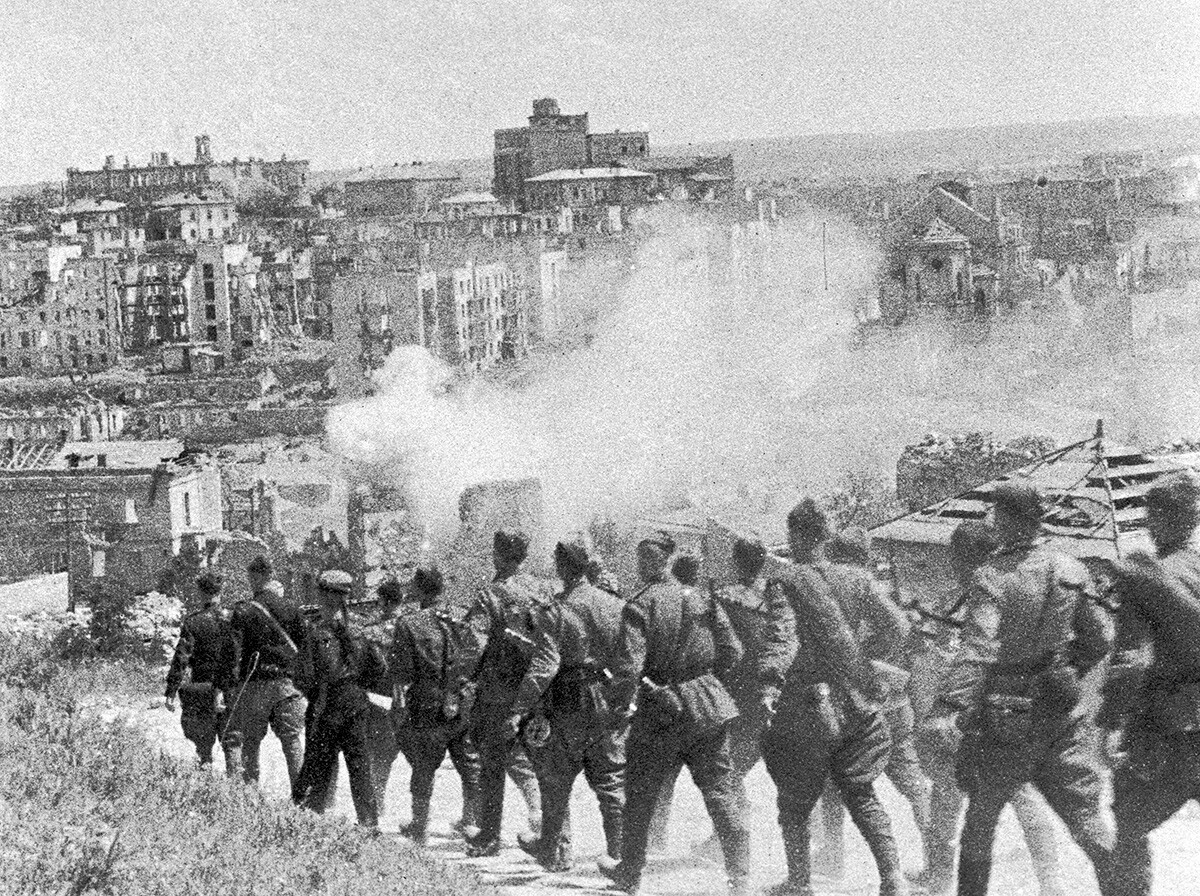
Defenders of the city.
Vladislav Mikosha/SputnikOn June 29, the enemy was already in the city center. The Coastal Army suffered heavy losses and was running out of ammunition. The command decided that organized resistance was no longer possible under these conditions and decided to evacuate.
On the night of July 1, planes and submarines began to evacuate the party activists, senior and higher command staff. Many soldiers tried to leave the city on improvised watercraft and were immediately destroyed by enemy fire.
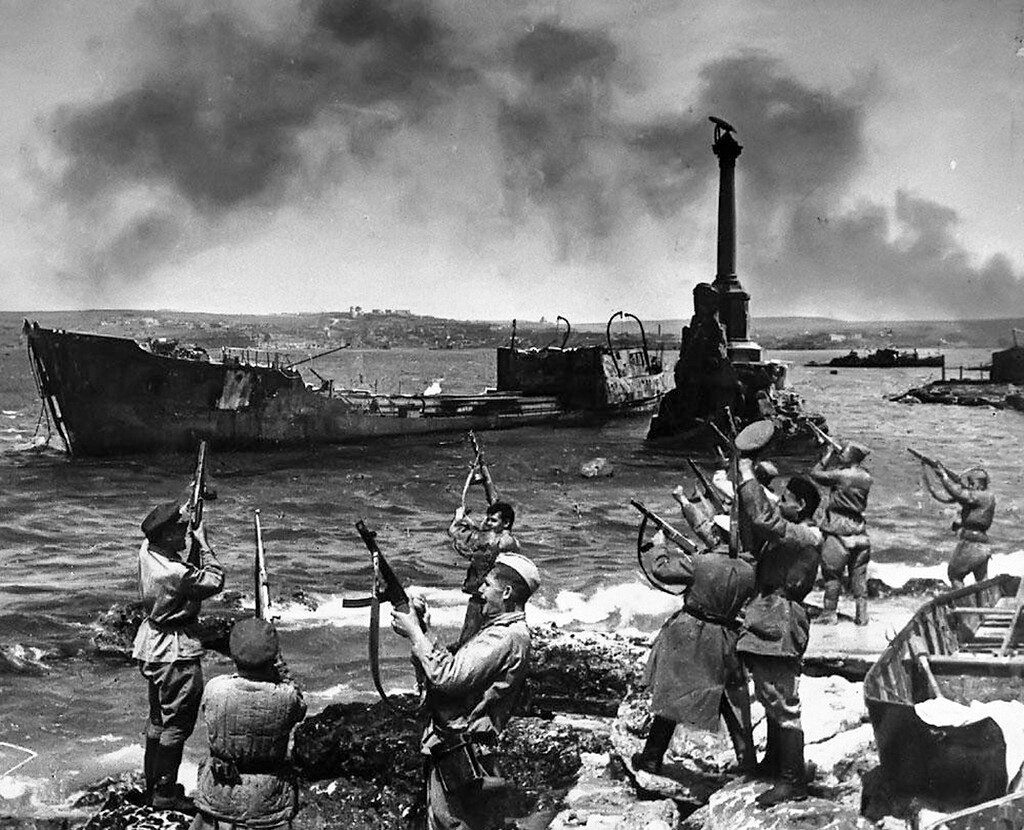
Liberated Sevastopol, 1944.
The Ministry of Defense of the Russian Federation.On July 3, Sevastopol fell, although thousands of remaining fighters resisted for several more weeks. The Soviets lost more than 150,000, either killed or captured, while the German-Romanian Army lost about 60,000 troops and had a further 240,000 wounded.
For taking the main base of the Black Sea Fleet, which had tied down large German forces for so long, Manstein was awarded the rank of Field Marshal. The freed troops were immediately scattered across the entire Soviet-German front.
The Red Army only returned to Sevastopol in Spring 1944.
If using any of Russia Beyond's content, partly or in full, always provide an active hyperlink to the original material.
Subscribe
to our newsletter!
Get the week's best stories straight to your inbox